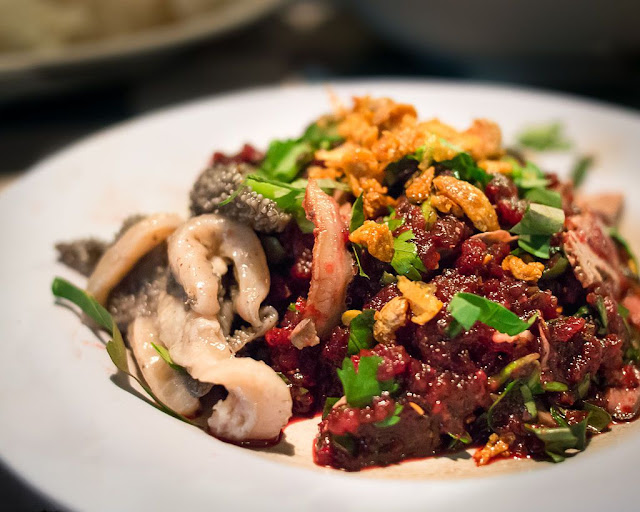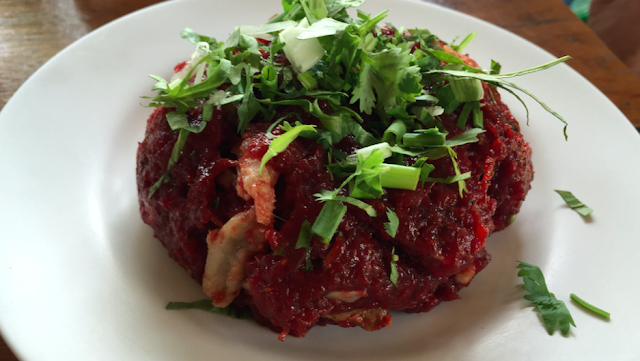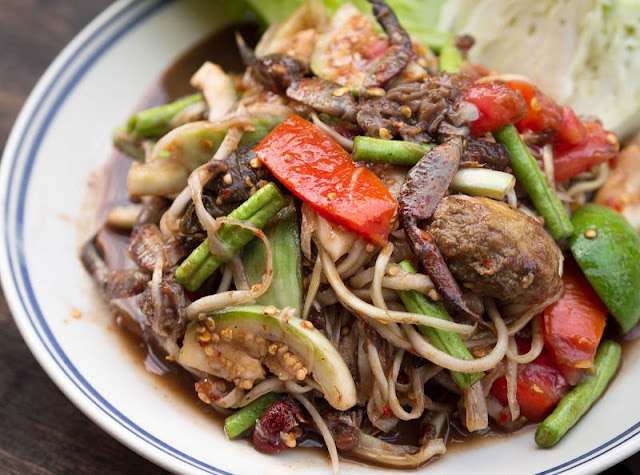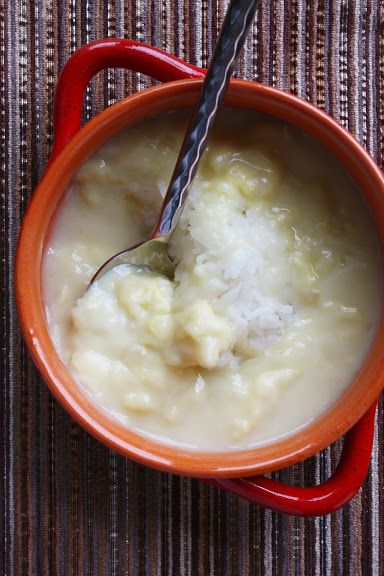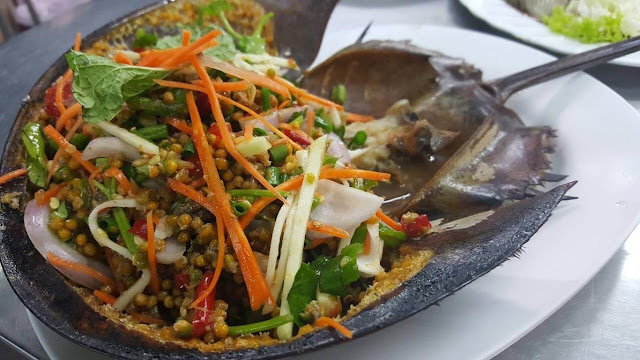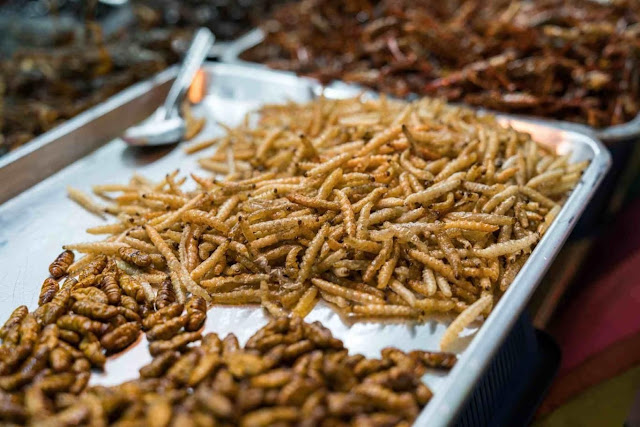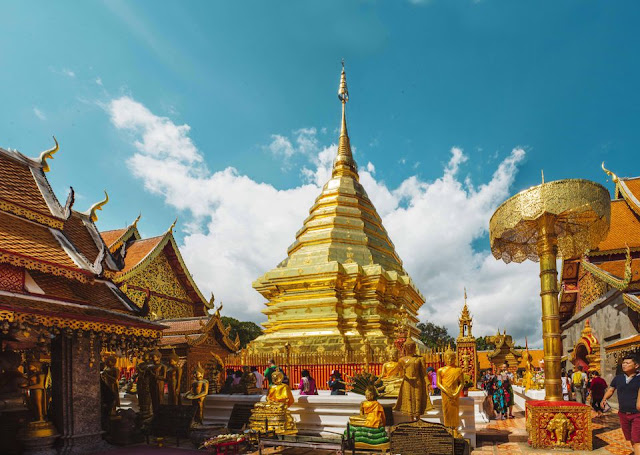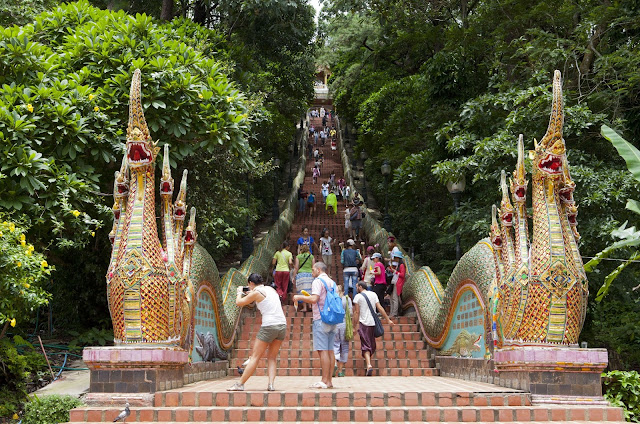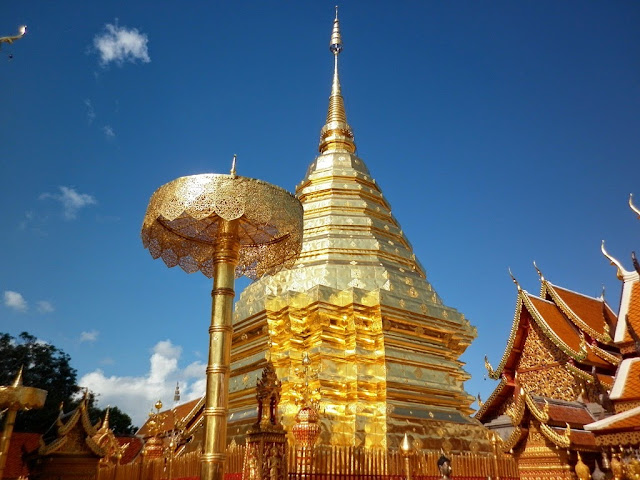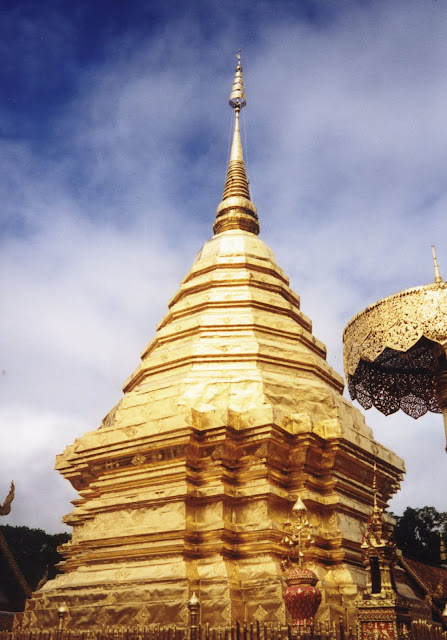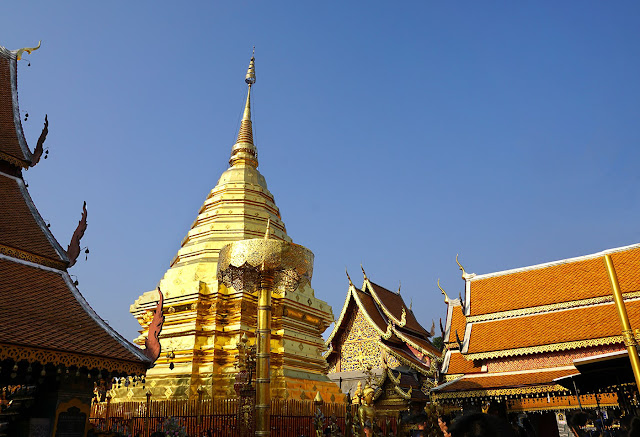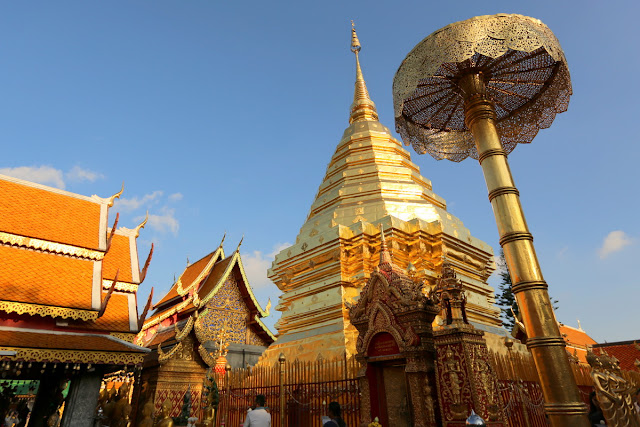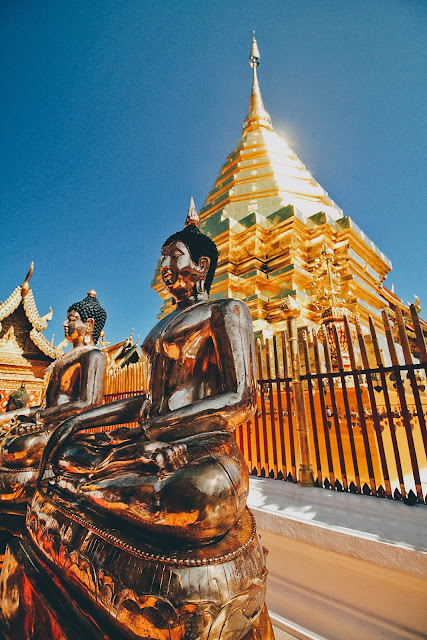Larb Dib
Even the more common variants of larb, a meat salad from Thailand's Isaan region, are surprising for many foreign visitors to the Kingdom. After all, while Americans love a salad with more meat than greens, most don't want to eat a salad that's only meat—unless it's smothered in mayo.While relatively tame larb recipes like larb moo (pork) and larb gai (chicken) are universally loved in Thailand, one type of larb is a decidedly niche food: Larb Dib, which is made of ground raw, beef, often swimming around in its own blood.
Larb dib is not only one of the strangest foods in Thailand, but can be potentially deadly. That's because even as food sanitation standards in the Kingdom have risen dramatically in recent years, beef is particularly prone to parasites, bacteria and other sometimes-lethal pathogens, which means that larb dib diners are completely at the mercy of whatever happens to be inside the raw beef they slurp up.
Som Tam Pla Ra
The Isaan region is at once the source of Thailand's most beloved cuisine, but also its most puzzling. Located in the northeastern part of the country close to the border with Laos, its trademarks are fresh, simple ingredients and lots of heat—for many foreigners, way too much.With that being said, Thais and foreigners alike tend to love som tam papaya salad, at least the "vanilla" version, which doesn't contain any particularly bizarre ingredients. Opinion diverges in lockstep with the additional ingredients you add to the salad, coming to a head with som tam pla ra: Thai papaya salad with fermented fish or crab.
Although the som tam pla ra faithful insist the unpleasant smell the fermented seafood exudes doesn't affect its taste, it's important to consider that the dish has different varieties of stinkiness, depending on how its prepared. If the person who makes it ferments fresh fish, it's som tam pla ra sot, which simply ends up being a bit sour. On the other hand, som tam pla ra lom uses fish that's already dead (and, in some cases, decomposing), and has a smell many describe as being unbearable.
Khaaw Niaw Thu Rian
Speaking of stinky foods, every traveler to Thailand will have encountered the durian, a fruit so smelly it's banned in taxis and hotels, in spite of the fact that most Thai people love it. For most foreigners, durian is strange enough on its own, but a variation exists that's even less palatable for people who think the fruit smells like old socks or dirty feet.Khaaw niaw thu rian literally means "durian with sticky rice," and is essentially the same concept as its more universally loved cousin, mango with sticky rice. Unfortunately, if you don't like durian in the raw, it's unlikely that drizzling it with sweet coconut milk (ga tii in Thai) is suddenly going to make the so-called "King of Fruits" more appealing to you.
Yum Khai Maeng Daa
Despite the fact that horseshoe crabs are a great deal stranger than ordinary crabs, they are eaten in certain parts of the world, including Thailand. One particular Thai preparation of horseshoe crab, Yum Khai Maeng Daa, is especially weird.That's because the body of the horseshoe crab is simply used as a dish this salad, the base of which is actually roe, or eggs. Adding another layer of weirdness to this is the fact that the eggs served inside the horseshoe crab's body are sometimes not even its own, but rather those of the mantis shrimp, an equally weird animal. Let's not even talk about the fact that some people consider horseshoe crabs toxic!
Mae Lang Thood
It wouldn't be a post about strange foods in Thailand without including "bugs." Actual bugs, not horseshoe crabs (which in some ways have more in common with insects that less-ancient crustaceans) or the parasites swimming around in larb dib.While it's difficult to determine which of Thailand's beloved bug dishes is the weirdest, mae lang thood (deep-fried insects) seem like an obvious choice. That's because if you didn't look closely at them before you eat them, you might not realize they're bugs at all.
Absent are the bitter flavors raw insects disburse into your mouth when you bite into them, not to mention their strange squishiness. The most bizarre thing about insects prepared in this way is that, like "normal" Thai foods, they actually taste pretty amazing!
See more: Handle the heat with these spicy dishes in Thailand
Source: Internet
